Modern ‘Warmth’ A Brief Excursion From
8,000-Year (Continuing) Cooling Trend
The scientific literature is replete with evidence that the geological record for the Holocene (the last 10,000 years) fails to support the concept that rising atmospheric CO2 concentrations cause ocean and land temperatures to rise.
Actually, the scientific literature strongly suggests that the correlation between rising CO2 and temperature would appear to veer off in the opposite direction: as CO2 rises, temperatures decline.
So if there is a correlation for the Holocene, it may be the inverse of climate model expectations.
Modern ‘Warmth’ Excursion Has Had Little Or No Effect On The Overall Long-Term Cooling Trend
According to an estimate of global sea surface temperature (SST) changes during the last 2,000 years (“Robust global ocean cooling trend for the pre-industrial Common Era“), the addition of the last 2 centuries (1800 to 2000 C.E.) of relatively modest SST warming only changes the overall per-millennium global cooling trend (~0.4°C) by one tenth of one degree. In other words, using a long-term perspective, the Holocene cooling trend has continued largely uninterrupted during the last two centuries.
“Our best estimate of the SST cooling trend, scaled to temperature units using the average anomaly method (method 1), for the periods 1–2000 CE is –0.3°C/kyr to –0.4°C/kyr, and for 801–1800 CE is –0.4°C/kyr to –0.5°C/kyr“
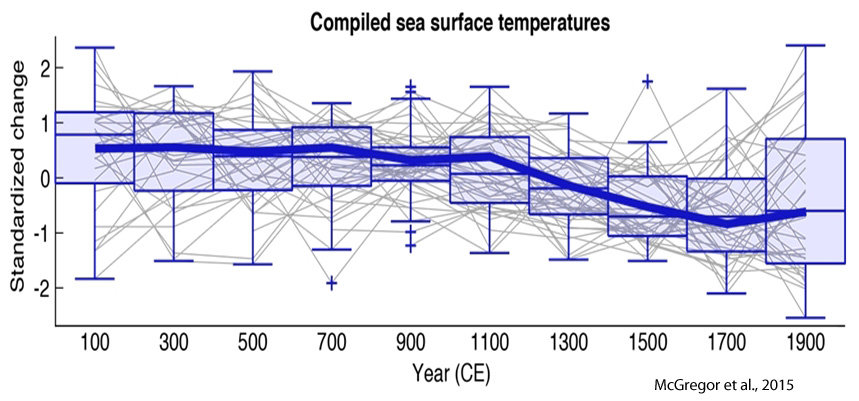
Overall cooling has been ongoing for most of the last ~8,000 years, mixed in with temporary warming “spikes” that last for a century or two. The modern warming that emerged in the early 20th century will, if history is a guide, eventually revert back to the cooling trajectory of the last several thousand years. Gerhard (2004) facilely illustrates this overall global cooling trajectory — with swerves and spikes along the way.
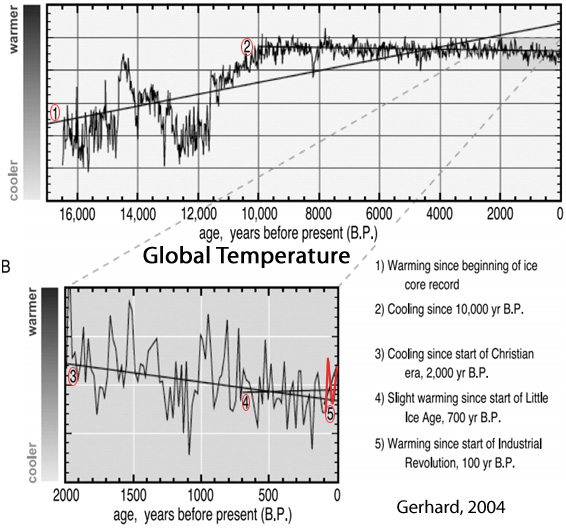
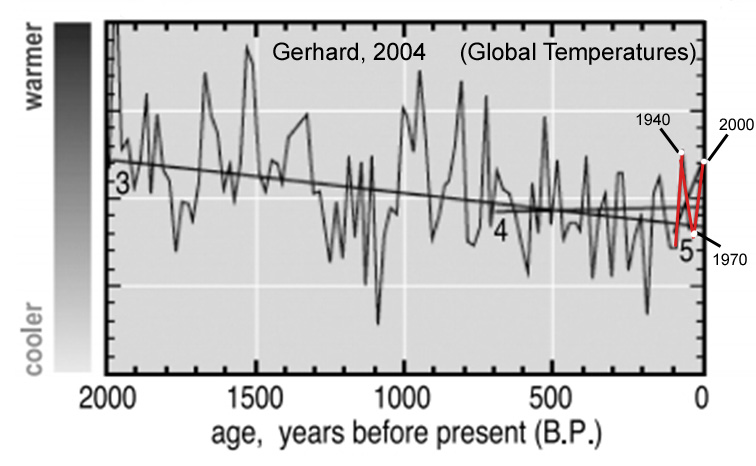
CO2 Concentrations Rose Steadily Throughout The Last 8,000 Years…While Earth Cooled
While the planet has been steadily cooling (with brief warming excursions) for the last 8,000 years, atmospheric CO2 concentrations have tilted in the opposite direction, rising from about 260 parts per million (ppm) ~8,000 years ago to about 280 ppm in ~1800 C.E.
So if CO2 rises as temperature drops, the correlation suggested by climate models (temperature should rise as CO2 rises) is not supported by by a large portion of the available scientific evidence.
Listed below are 50 inverse “hockey stick” graphs featuring a long-term global cooling trend that is largely uninterrupted by modern era temperatures. These reconstructions illustrate the unheralded disconnect between CO2-driven climate models and the geological record.
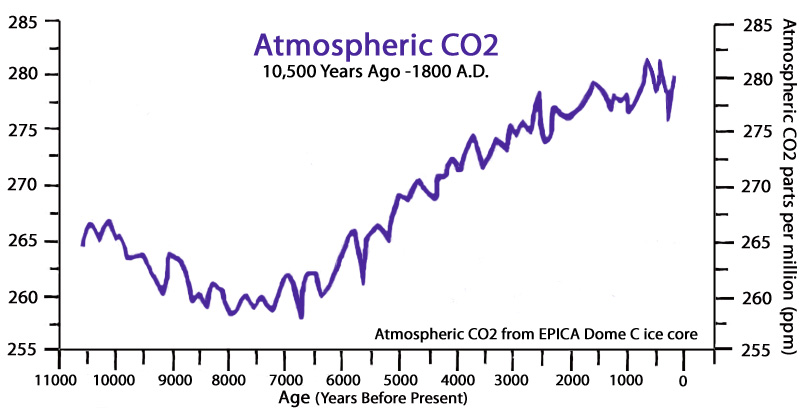

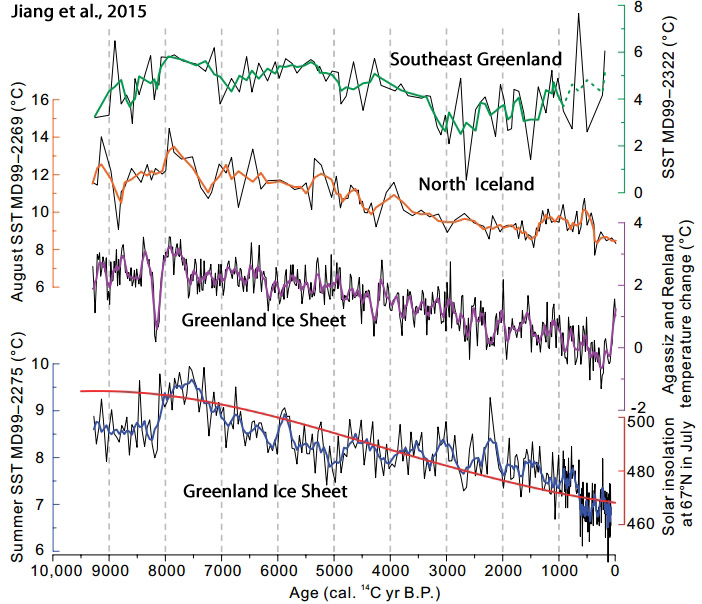

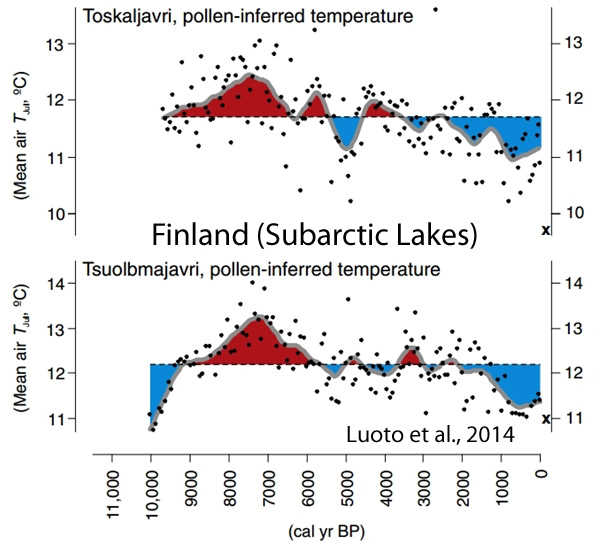
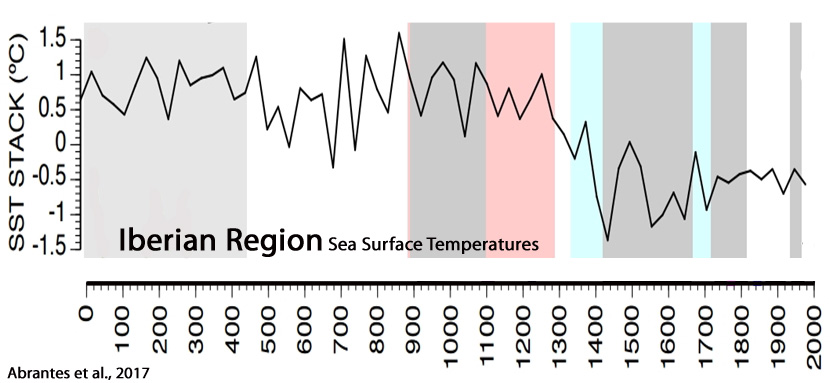
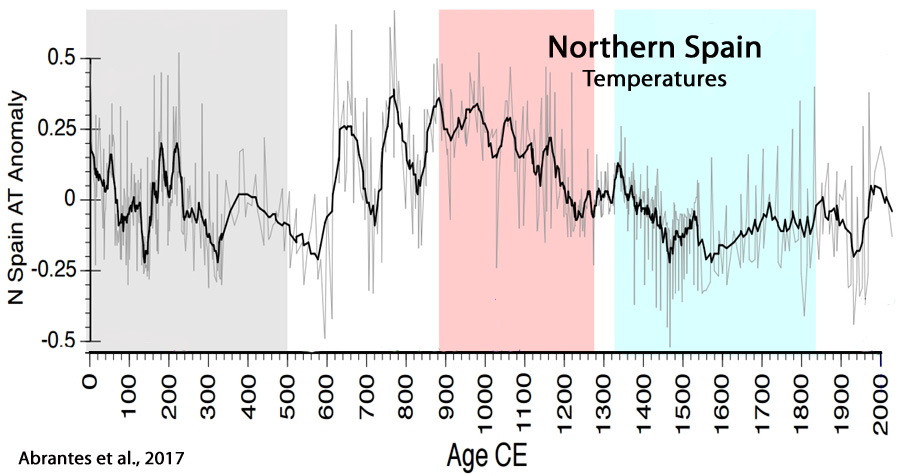
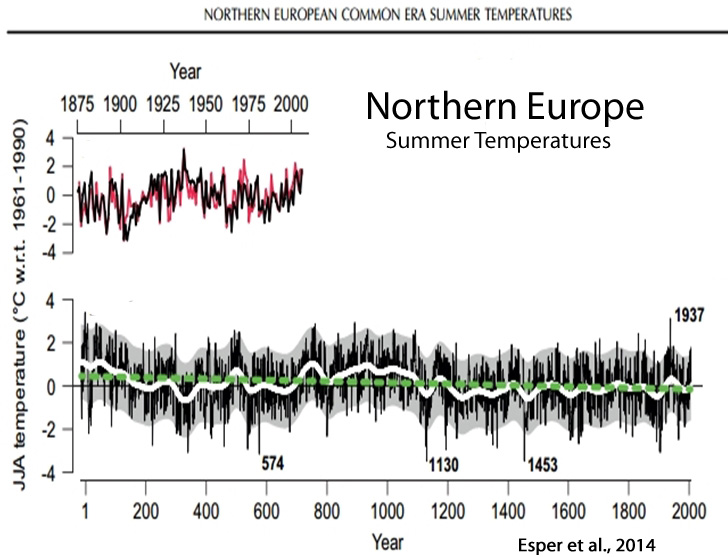

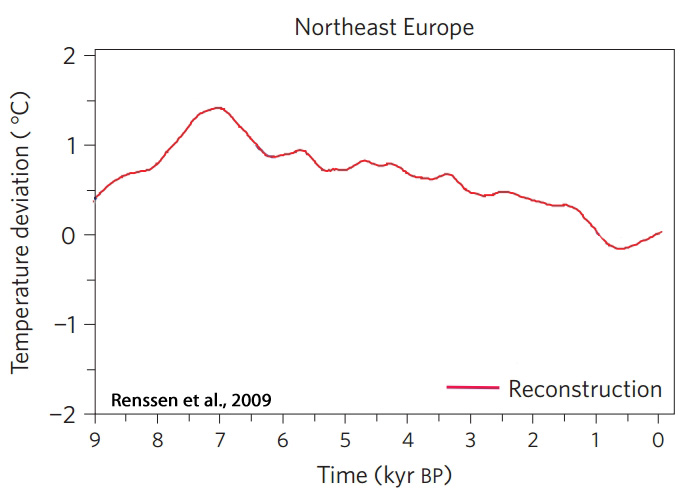
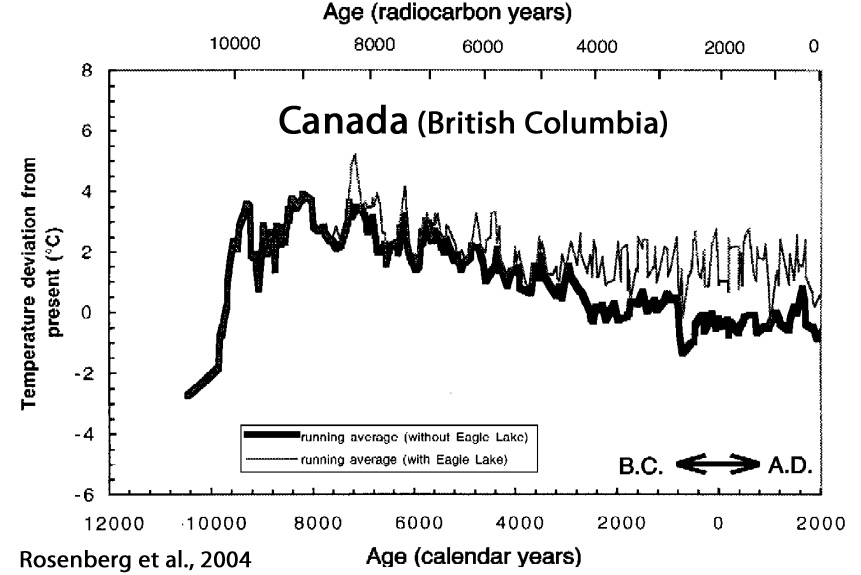
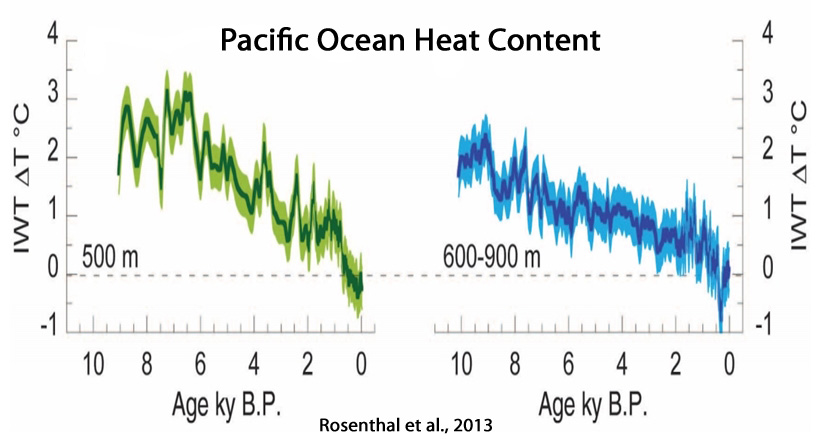
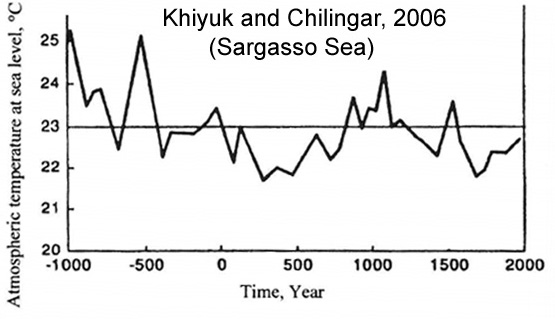
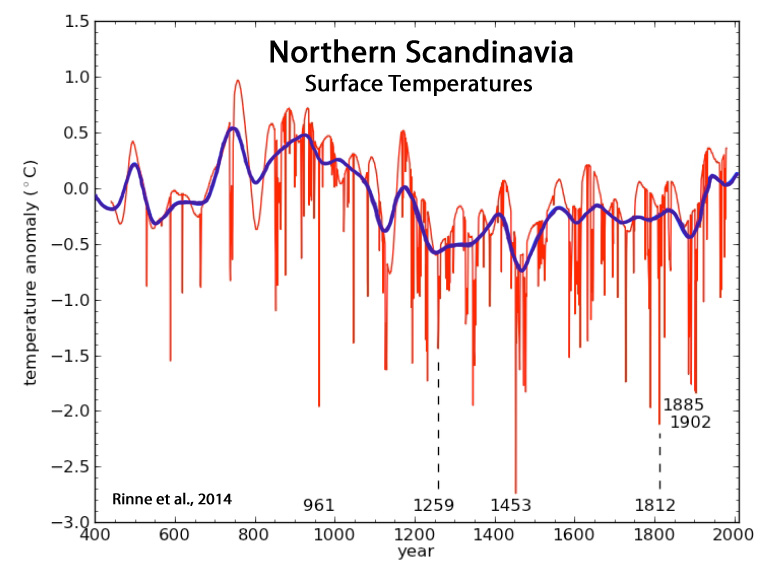
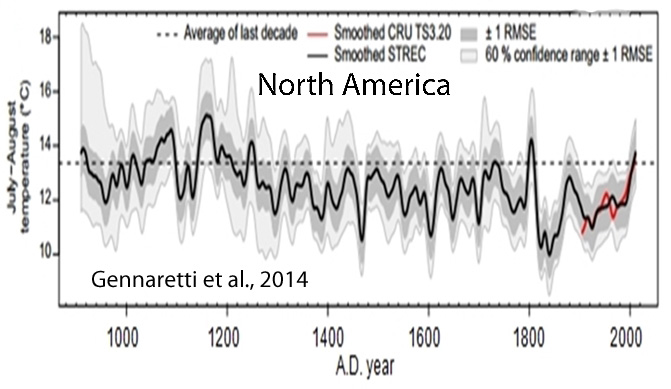
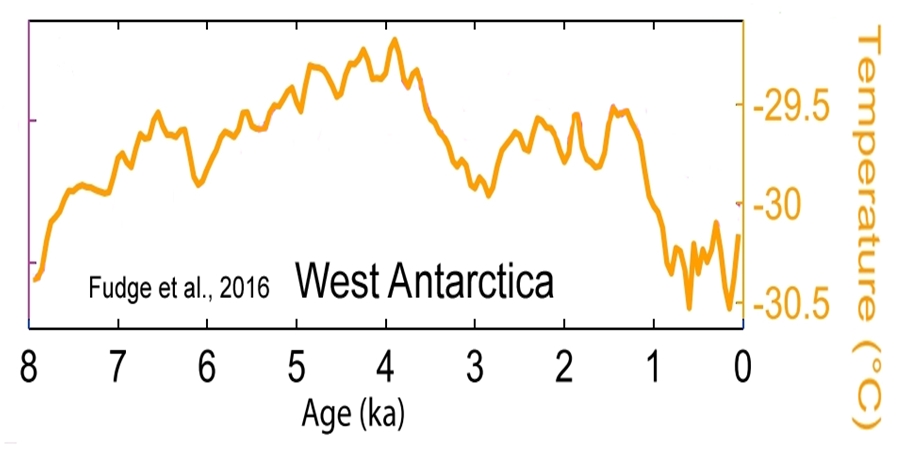
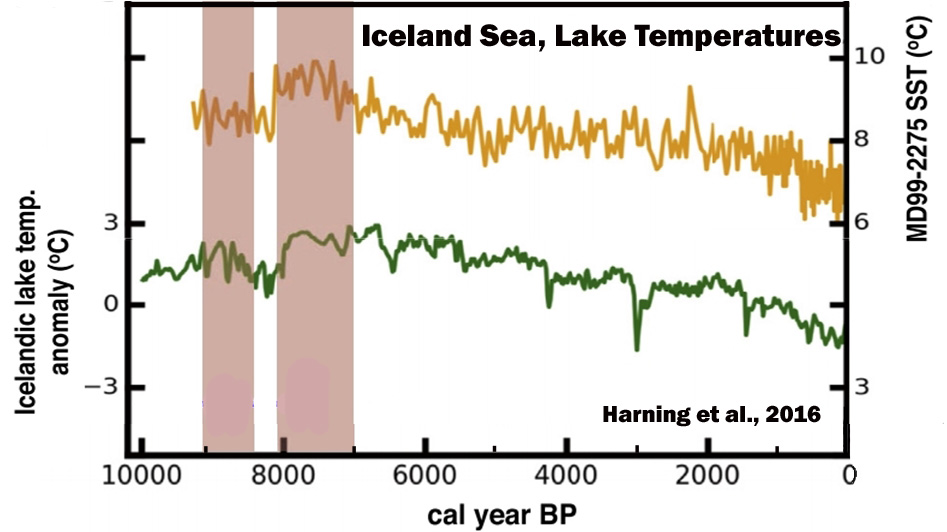
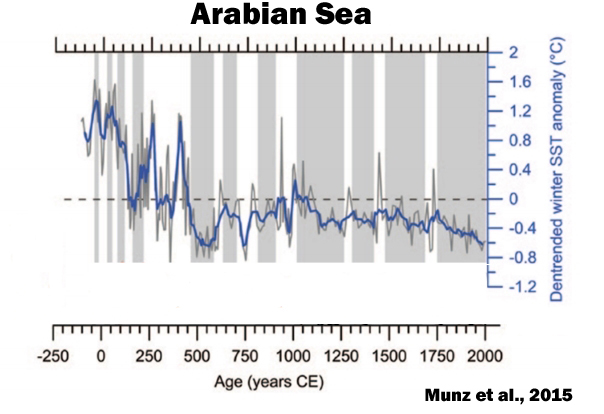
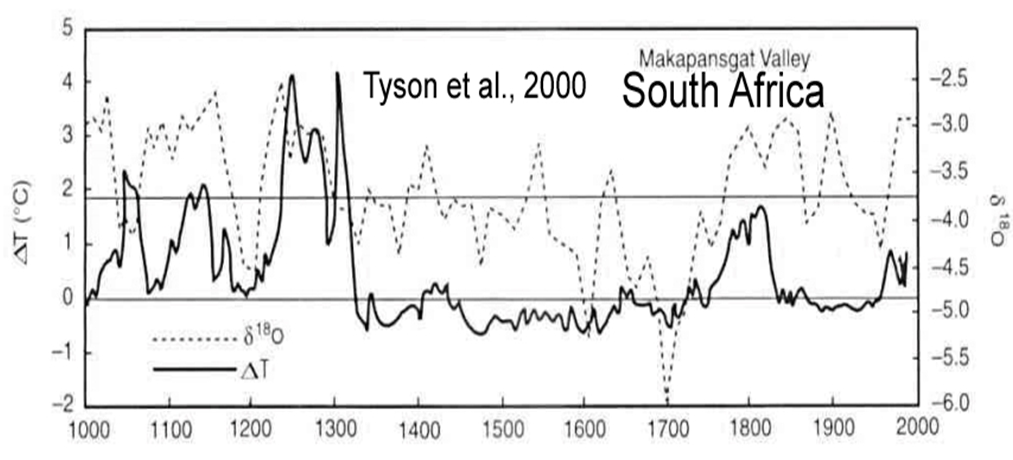
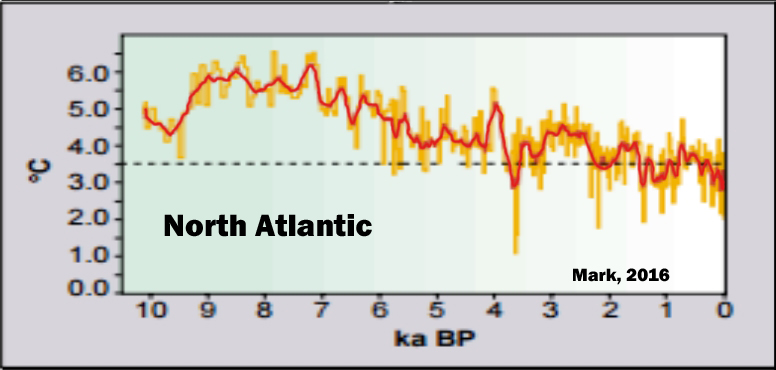
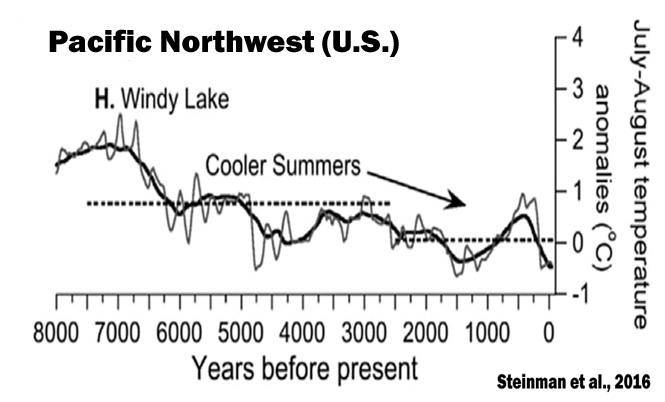


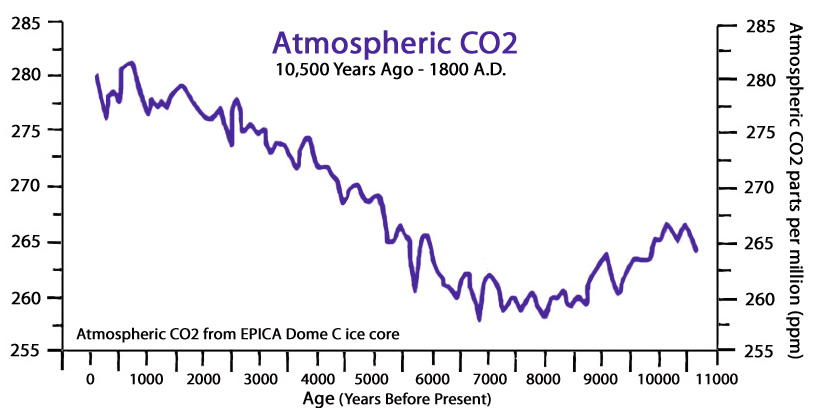
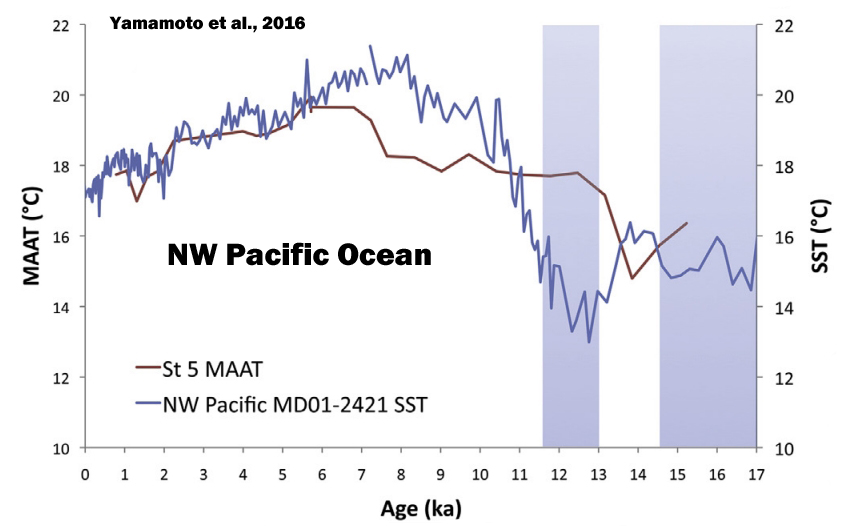
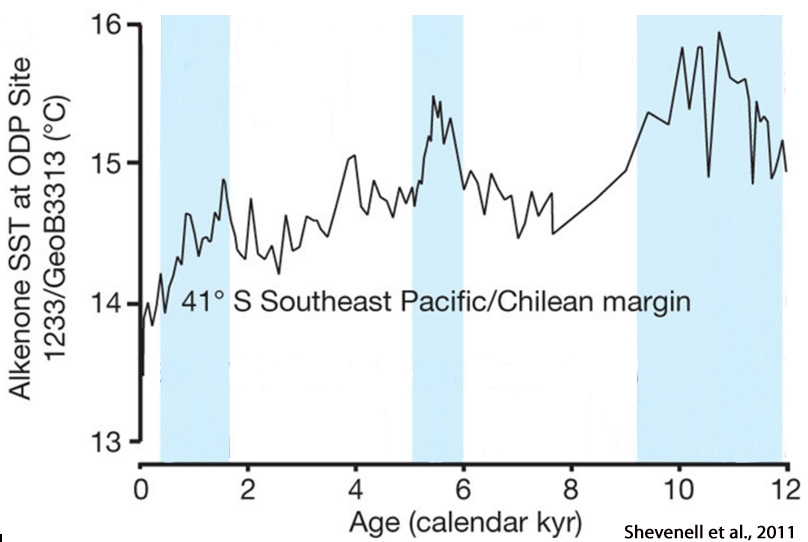
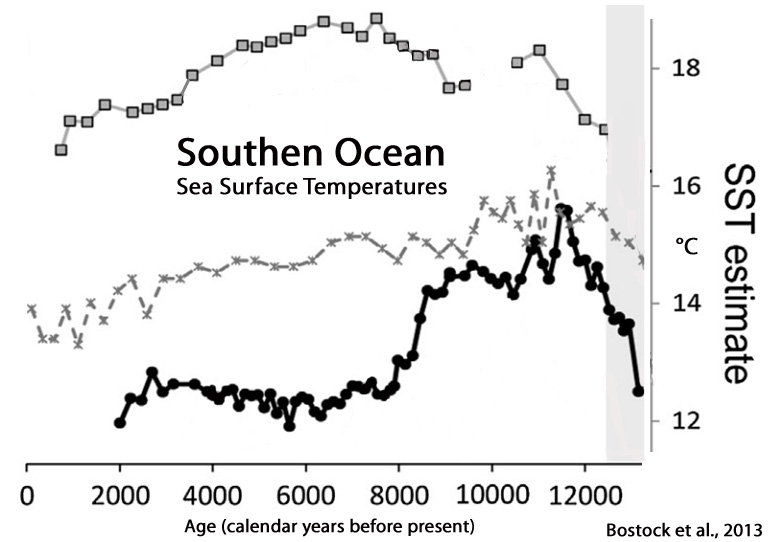
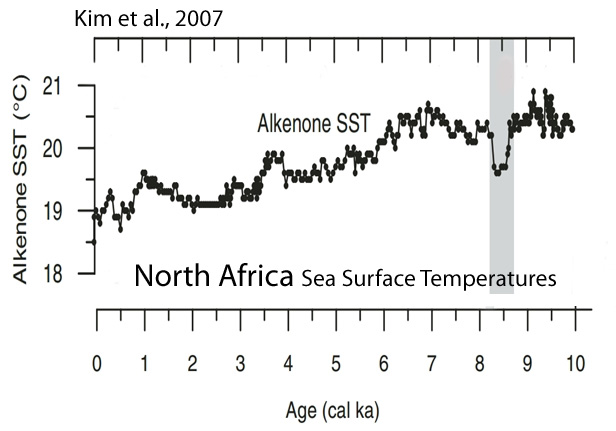

“[P]roxy-inferred annual MATs [annual mean air temperatures] show the lowest value at 11,510 yr BP (7.6°C). Subsequently, temperatures rise to 10.7°C at 9540 yr BP followed by an overall decline of about 2.5°C until present (8.3°C).”
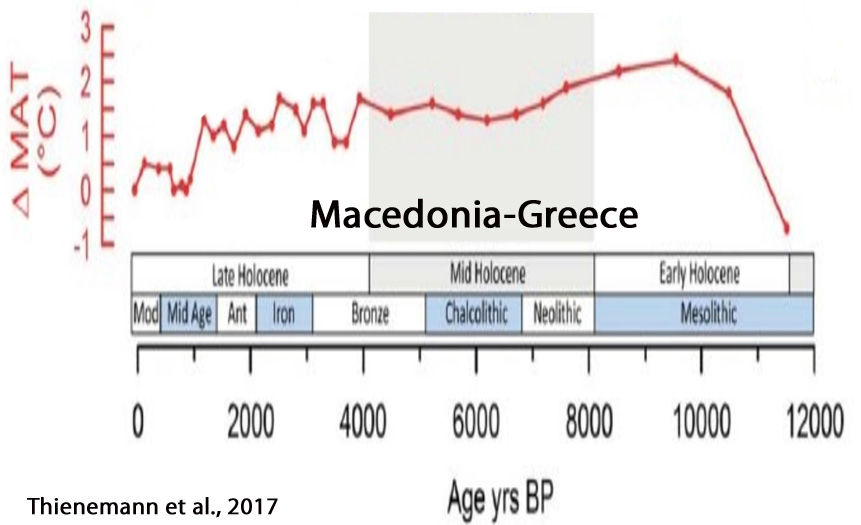
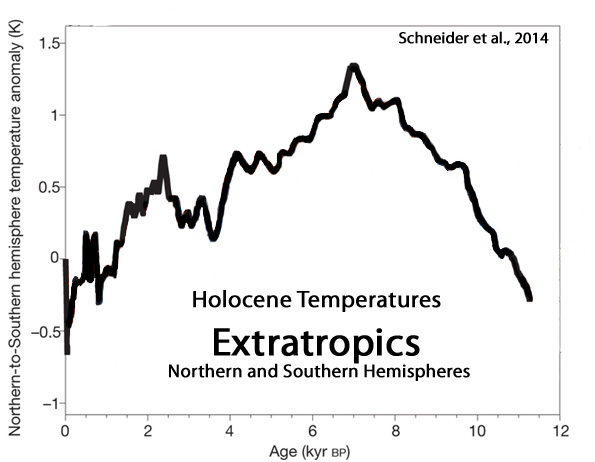
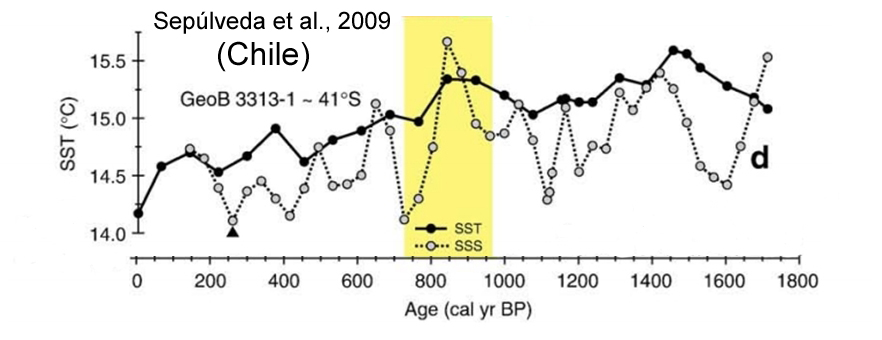
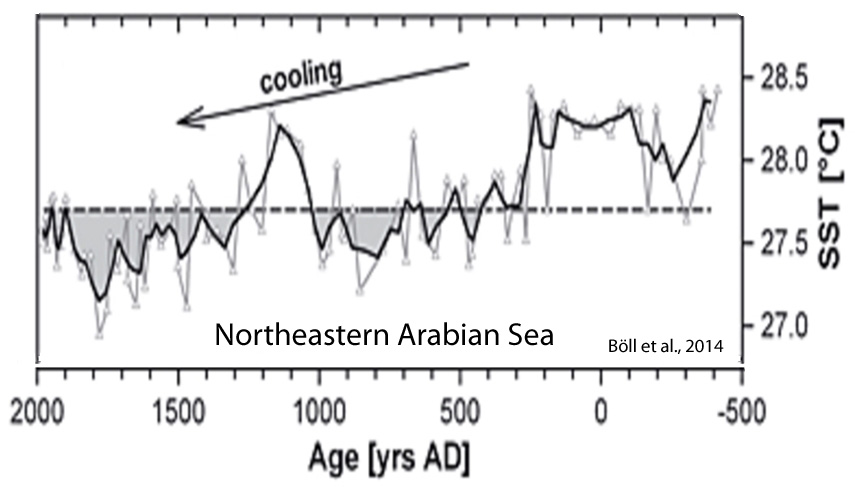
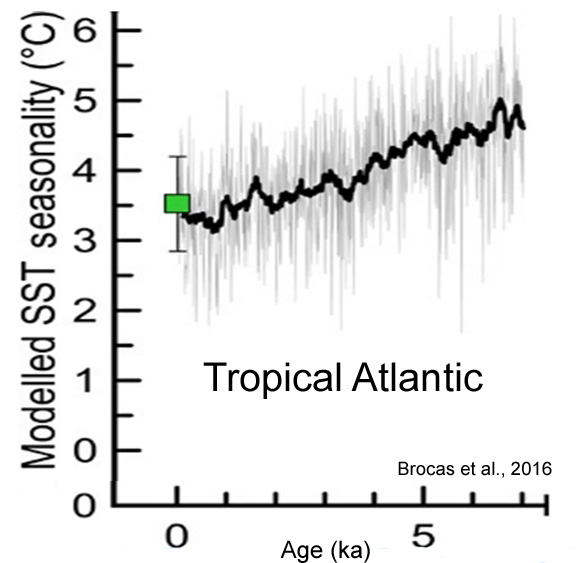
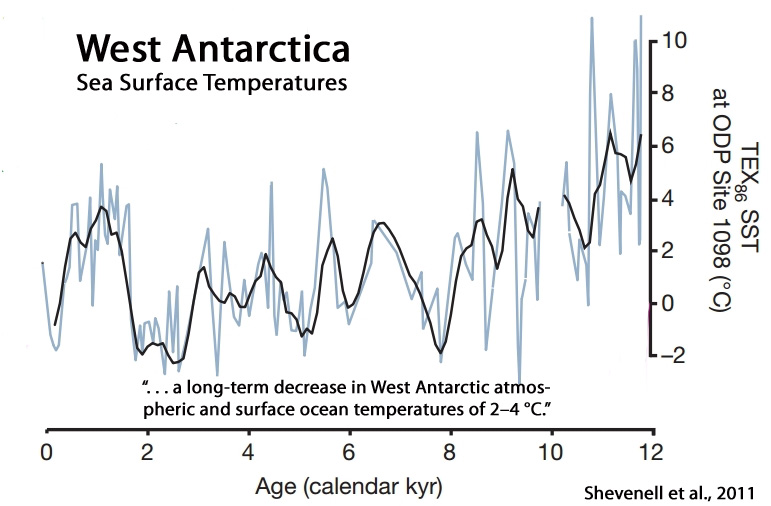
“A marine sediment record from off the shore of the western Antarctic Peninsula also shows an early Holocene optimum during which surface ocean temperatures were determined to be 3.5°C higher than present. Other evidence suggests that the George VI ice shelf on the southwestern Antarctic Peninsula was absent during this early-Holocene warm interval but reformed in the mid Holocene.”
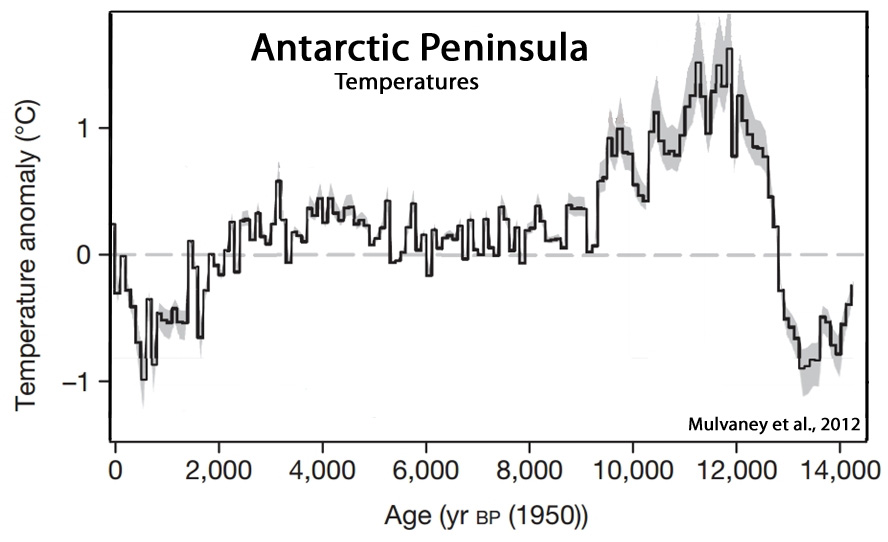
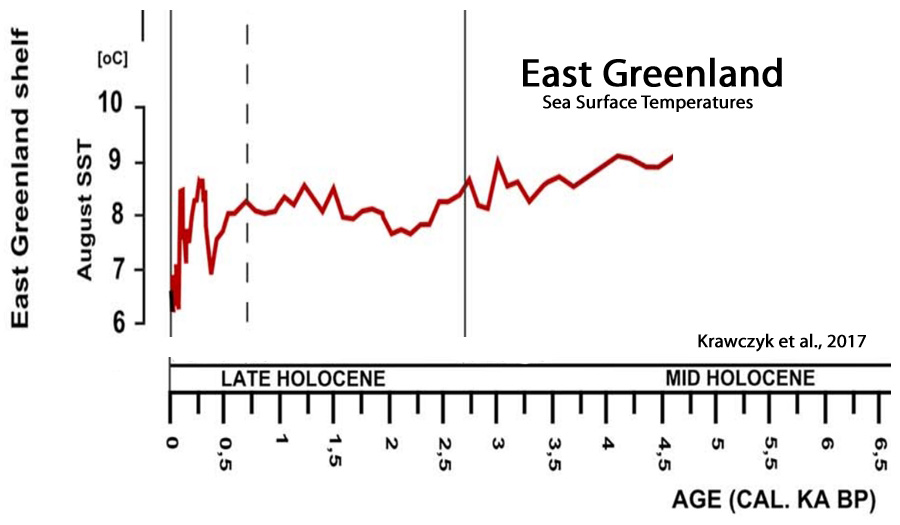
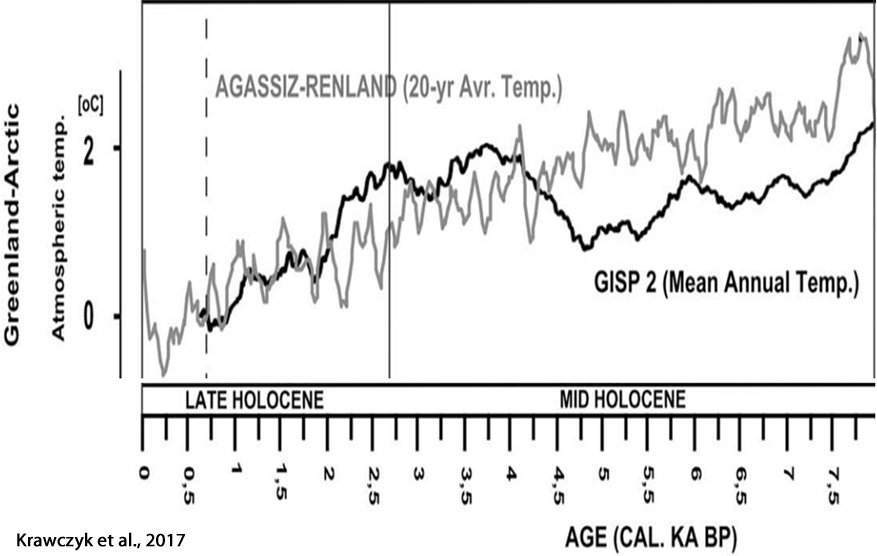
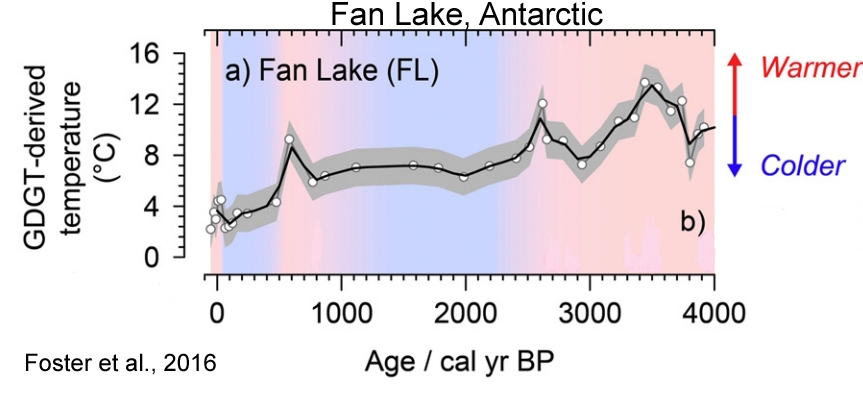
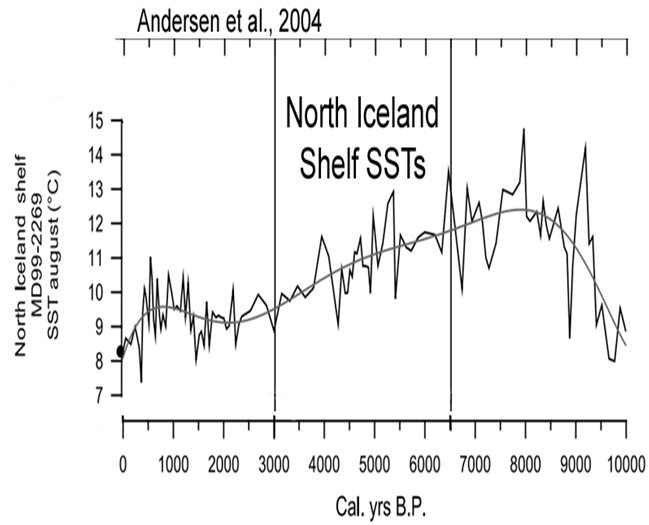
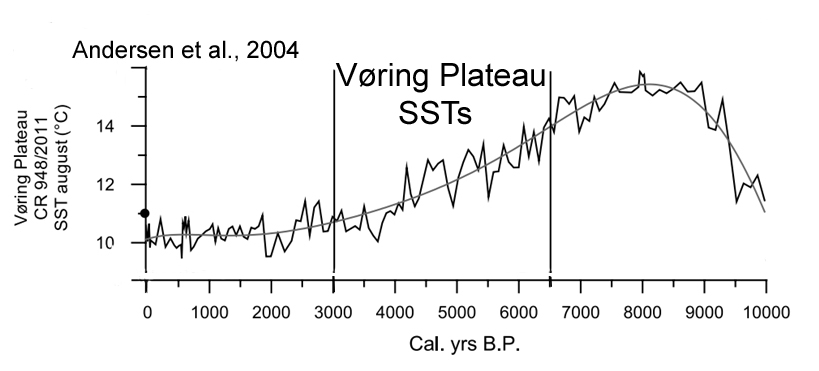
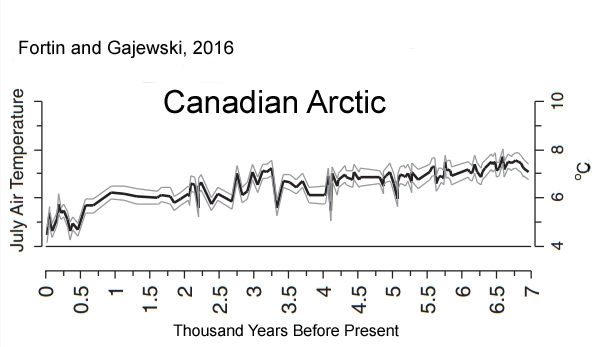
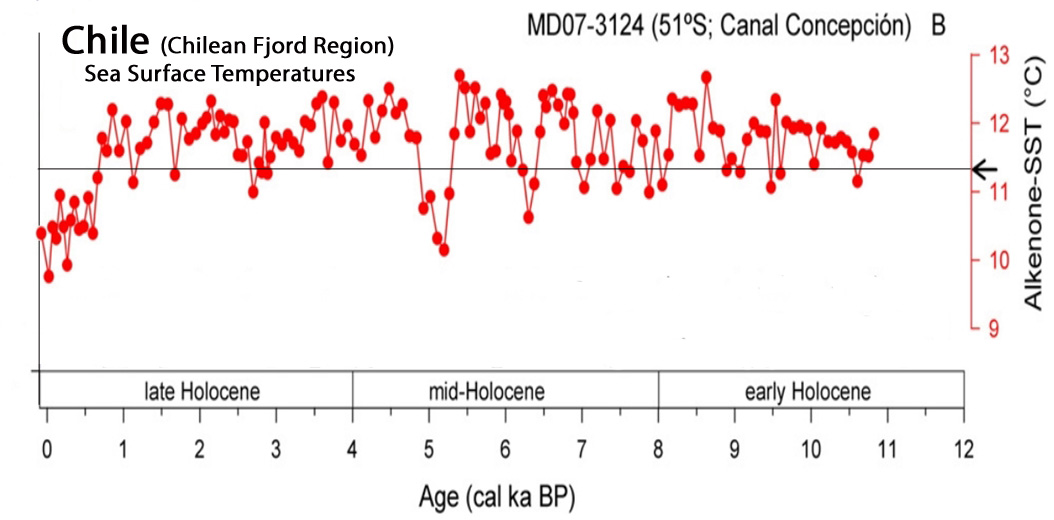
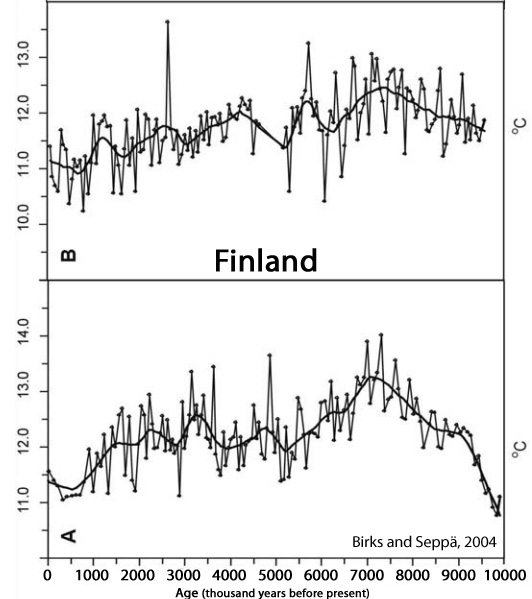

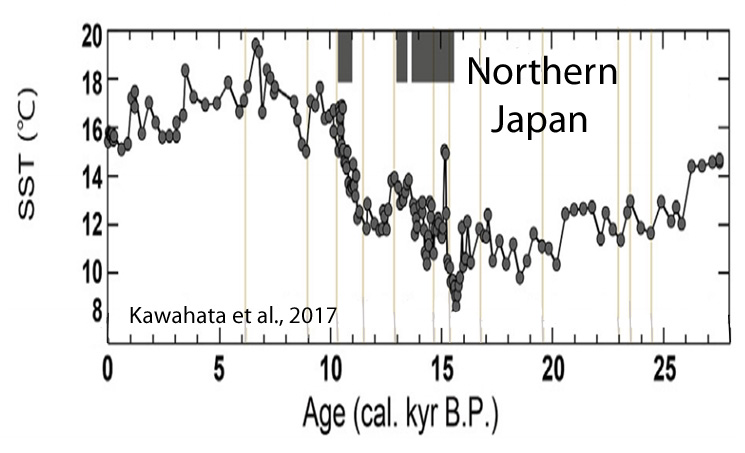
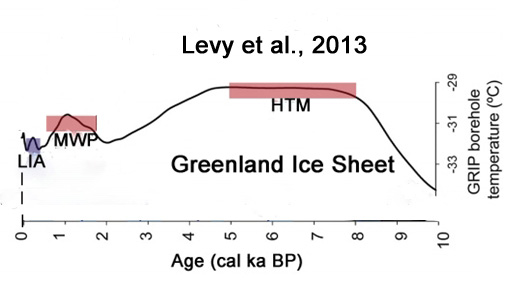
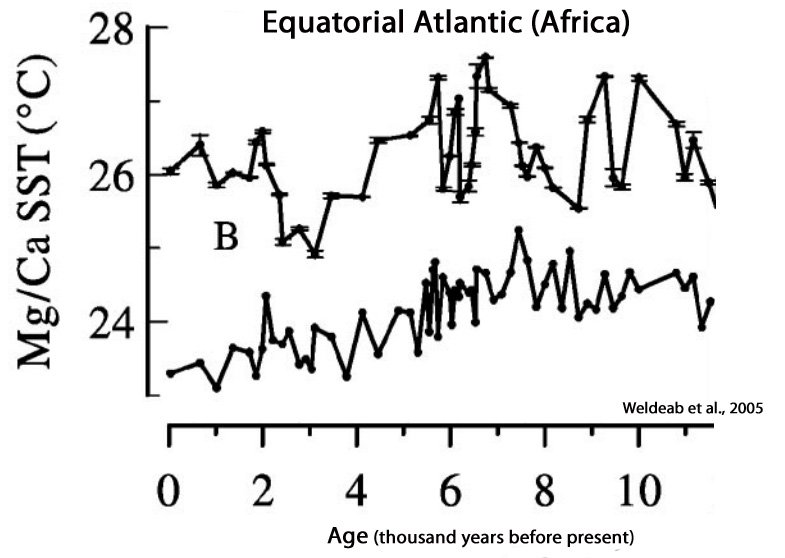
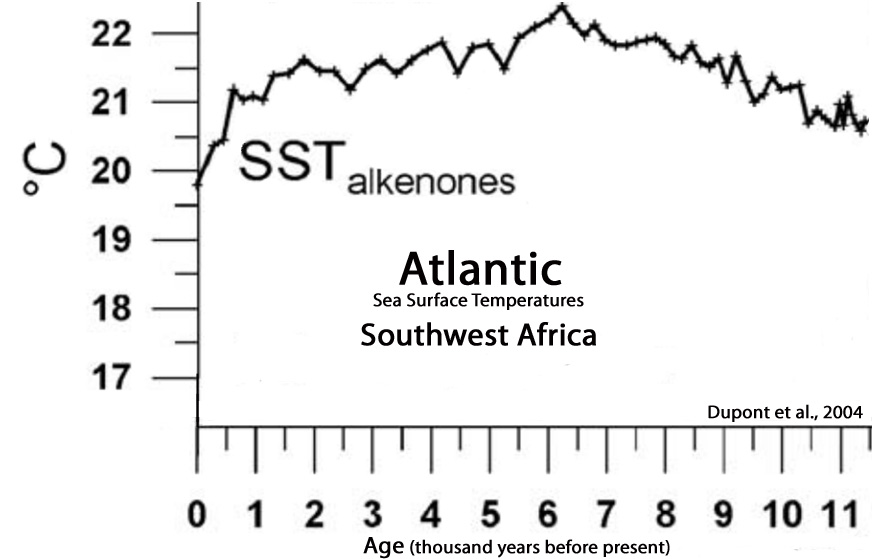
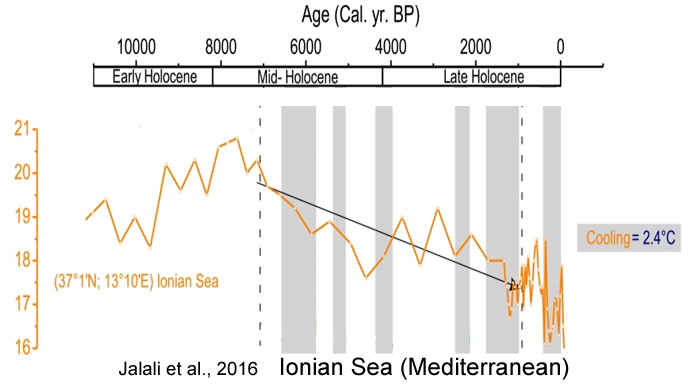





And the truth will set you free
Another great compendium showing that the Earth is current just a tiny jot above the COLDEST PERIOD IN 10,000 YEARS
https://vimeo.com/14366077
I have been saying that for over 15 years. CO2 molecules are constant radiators – more CO2, more radiation to space. It doesn’t matter about ‘downward’ radiation, the entire earth’s surface, including land and water are far better radiators than CO2.
CO2 radiating in the atmosphere causes energy in the non-radiative gases to pass to Co2 by collisions, thus cooling the atmosphere as well.
And what a nice thermostat this is. When temperatures increase for whatever reason, the oceans release additional CO2 causing cooling after which the CO2 is absorbed in the oceans again. Otherwise, we would have a run-away mechanism.
Taking the very long view, during the recent 4 million years, earth’s temperature has been cooling about 1 C per million years.
https://wattsupwiththat.com/2017/02/28/the-timing-of-interglacials/#comment-2439371
[…] Kenneth Richard, March 20, […]
That is a most extraordinary collection of observations with a most significant conclusion.
Thank you for the hard work.
And here is a prediction of cooling from cloud induced cosmic rays:
http://www.thegwpf.com/russian-scientists-predict-global-cooling-in-the-next-few-decades/
Not to worry. The Mann-made LIA temperature levels will be increased in the next hockey stick. These alarmist folks are flexible, if nothing else.
Hi Kenneth, I am a retired naval officer, engineer, programmer etc. I find your lists of papers to be invaluable. I collect climate related time series into a flexible database/website. It won’t stand heavy traffic and may not appeal to the masses but you can compare anything with anything with some optional pre plot functions.
When possible I get the data from the underlying paper or website but getting it from the graph image also works well enough.
I am in close touch with a senator in the Australian parliament whose party is strongly skeptical on CAGW.
My website is http://timeseries.publicknowledge.com.au/
If I can help in any way: pjb@flix.com.au
Yes, getting the word out regarding the scientific basis for a skeptical position on “CAGW” is the sole purpose here.
That theory isn’t unreasonable. The actual physics of the GHG effect favor cooling. Strange but true.
Climate “Science” on Trial; Evidence Shows CO2 COOLS the Atmosphere
https://co2islife.wordpress.com/2017/01/29/climate-science-on-trial-evidence-shows-co2-cools-the-atmosphere/
This has a sweet logic about it. When a body heats up it sweats to release heat and cool the body, until statis. The earth seems to sweat CO2 which then acts as if the ‘greenhouse’ is glazed with reverse Pilkington K glass: reflecting heat back into space. Now that’s what I call a greenhouse effect.
[…] many NH regions were as warm or warmer than present during the “Medieval Climate Anomaly”.) 50 Inverted Hockey Sticks – Scientists Find Earth Cools As CO2 Rises. Modern ‘Warmth’ A Brief Excursion From 8,000-Year (Continuing) Cooling Trend The scientific […]